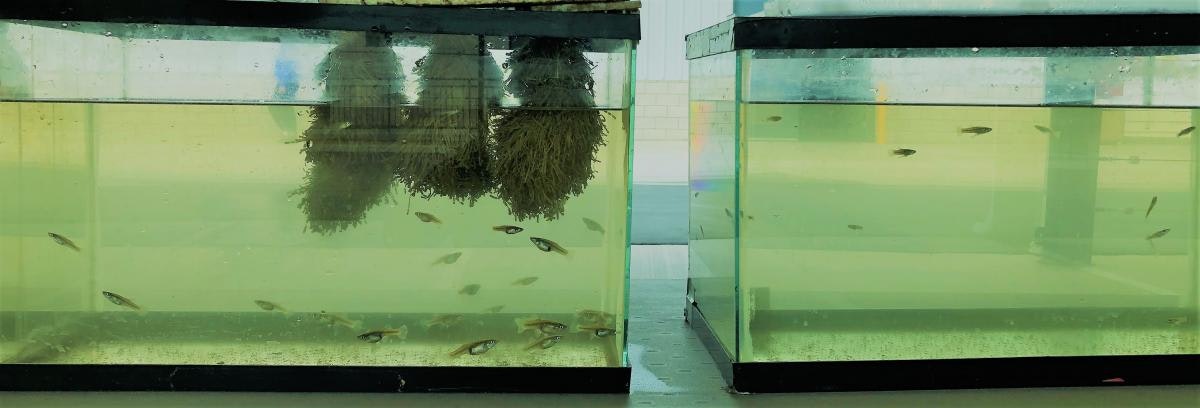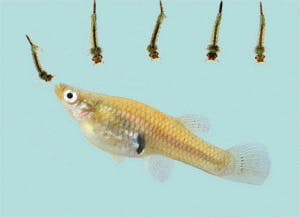Mosquitofish (Gambusia affinis)
The western mosquitofish (Gambusia affinis) is native to the eastern and southern U.S. and has been used worldwide for mosquito control. It was introduced into northern California in 1922 and brought to the Coachella Valley in the 1920s and 1930s.

Description: It is a small fish which is dull gray or brown with no bars or bands on its sides. It gives birth to live fry (baby fish) instead of laying eggs. Mosquitofish have flattened heads and protruding mouths which allow them to feed at the water’s surface, right where mosquito larvae and pupae spend most of their time.
Why we use mosquitofish
Mosquitofish are an important factor in integrated vector management techniques (IVM). As a biological control effort, the District can place mosquitofish in bodies of water to control immature mosquitoes before they become flying and biting adults. This control effort allows an alternative to chemical control treatments.
Mosquitofish can tolerate extreme temperatures but prefer around 88°F. They are extremely adaptable and hardy making them desirable in permanent and semi-permanent water sources. Mosquitofish should not be combined with other species in aquariums or ponds because they will often attack each other.
.png?ixlib=rb-1.1.0&w=2000&h=2000&fit=max&or=0&s=e8acfe8a74121c1edf683adce2401a32)
What you should know about mosquitofish
Standing water in the Coachella Valley is a problem. Ideally, water would be drained so that mosquitoes could not lay eggs there. When water is expected to be present for a long period of time, using fish to control and prevent mosquitoes is ideal.
Where we place fish: In general, mosquitofish do well in permanent bodies of water in the valley, provided that they are at least 18” deep. Shallower water often gets too hot. Water with some plants can provide cover for the mosquitofish from predatory birds. Mosquitofish can be sensitive to elevated ammonia levels in the water, which can occur if there are too many fish or in wastewater.
Mosquitofish and the law: In Riverside County, there are concerns that introducing mosquitofish into some habitats may affect the desert pupfish, Cypronidon macularius, which is an endangered species. The mosquitofish can eat desert pupfish eggs, as well as compete with the pupfish for food. Therefore, California state law requires a permit from the Department of Fish and Game for the transportation and stocking of mosquitofish in California public waters. Putting fish into public waters without a permit can result in jail time, a $1,000 fine, or both. For this reason, the District closely tracks where we place mosquitofish each year.
A California state certified technician can inspect standing water and advise you if mosquitofish would be an appropriate long-term solution for you, please call (760) 342-8287 or request a service inspection.

